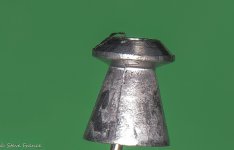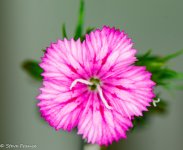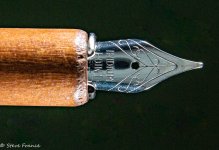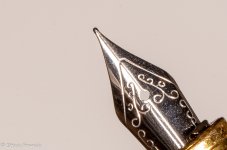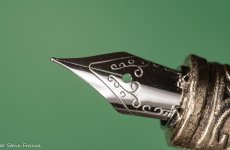- Messages
- 958
- Name
- Steve France
- Edit My Images
- Yes
Just building myself an indoor macro rig (for rainy cold days) and the only thing I could find to photograph was an old battered Air Gun Pellet. Not tried anything like this before and the lighting is literally a black-hole. I have 2 (cheap) LED swanneck lights , 1 below and 1 above with a ring flash on the lens. I tried various coloured backdrops and I think the green works best. As always all and any advice much appreciated.
PS I have watched numerous videos and read more than few articles BUT it all becomes confusing when actually taking your own pictures (me anyhow)
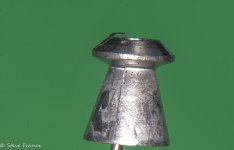
PS I have watched numerous videos and read more than few articles BUT it all becomes confusing when actually taking your own pictures (me anyhow)



